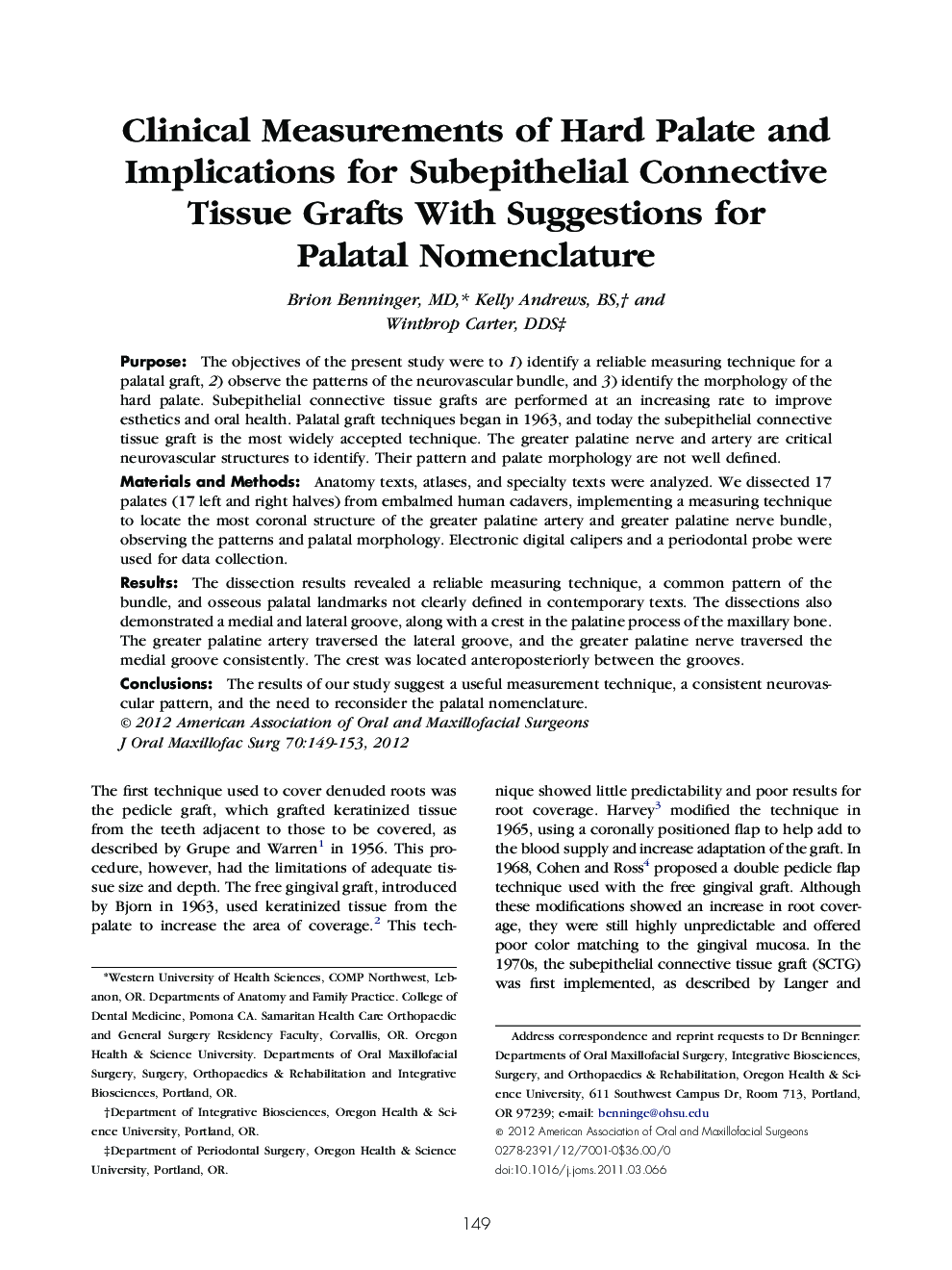| Article ID | Journal | Published Year | Pages | File Type |
|---|---|---|---|---|
| 3156738 | Journal of Oral and Maxillofacial Surgery | 2012 | 5 Pages |
PurposeThe objectives of the present study were to 1) identify a reliable measuring technique for a palatal graft, 2) observe the patterns of the neurovascular bundle, and 3) identify the morphology of the hard palate. Subepithelial connective tissue grafts are performed at an increasing rate to improve esthetics and oral health. Palatal graft techniques began in 1963, and today the subepithelial connective tissue graft is the most widely accepted technique. The greater palatine nerve and artery are critical neurovascular structures to identify. Their pattern and palate morphology are not well defined.Materials and MethodsAnatomy texts, atlases, and specialty texts were analyzed. We dissected 17 palates (17 left and right halves) from embalmed human cadavers, implementing a measuring technique to locate the most coronal structure of the greater palatine artery and greater palatine nerve bundle, observing the patterns and palatal morphology. Electronic digital calipers and a periodontal probe were used for data collection.ResultsThe dissection results revealed a reliable measuring technique, a common pattern of the bundle, and osseous palatal landmarks not clearly defined in contemporary texts. The dissections also demonstrated a medial and lateral groove, along with a crest in the palatine process of the maxillary bone. The greater palatine artery traversed the lateral groove, and the greater palatine nerve traversed the medial groove consistently. The crest was located anteroposteriorly between the grooves.ConclusionsThe results of our study suggest a useful measurement technique, a consistent neurovascular pattern, and the need to reconsider the palatal nomenclature.
